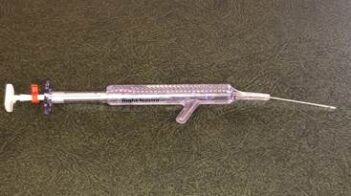The healthcare industry is no stranger to innovation. It constantly seeks ways to enhance patient care, improve device functionality, and reduce costs. One technological advancement making significant waves in healthcare is multi-material and multi-component plastic injection molding. This cutting-edge manufacturing technique is reshaping medical device design and production, offering a multitude of benefits that have the potential to transform patient outcomes and healthcare practices.
Understanding Multi-Material and Multi-Component Injection Molding
Before diving into the impact on healthcare, let’s grasp the basics. Multi-material plastic injection molding involves the simultaneous injection of two or more different materials into a single mold cavity to create a single, integrated component. Similarly, multi-component injection molding involves the sequential injection of different materials into the same mold to create distinct but interconnected components that are assembled during the molding process.
Enhancing Medical Device Design
The healthcare industry demands precision and functionality in medical devices. Multi-material and multi-component injection molding allow for the creation of intricate and integrated designs that were previously difficult to achieve. For example, a medical device may require a soft, flexible grip combined with a rigid, durable body. Traditional manufacturing methods often struggle with such complexity, but multi-material molding seamlessly brings these elements together.
Consider a syringe with an ergonomic handle and a sharp needle. Multi-material molding enables the production of this device in a single process. The soft grip for comfortable handling and the rigid needle for precise injection are combined seamlessly. This not only enhances user experience but also ensures product integrity and lowers costs.
Reducing Assembly Complexity
Streamlining assembly processes is a significant advantage of multi-component molding. In the healthcare industry, where devices often consist of numerous parts, reducing the number of components can save time and resources while minimizing the risk of assembly errors.
For instance, an insulin pen may comprise several parts, including a cap, a plunger, and a housing. Multi-component molding allows for the integration of these components during the molding process, eliminating the need for manual assembly. This not only reduces costs but also enhances product consistency and reliability.
Improving Functionality and Performance
In healthcare, the performance of medical devices can be a matter of life and death. Multi-material molding enables the creation of devices with enhanced functionality and improved performance. For example:
- Drug delivery devices: Devices can be designed with both soft and rigid components, ensuring precision in drug administration and patient comfort.
- Surgical instruments: Complex surgical instruments can be manufactured with sharp, durable cutting edges and ergonomic grips for surgeon ease.
- Diagnostics: Multi-component molding enables the integration of multiple sensors and components into diagnostic devices, enhancing their accuracy and usability.
Enhancing Patient Safety and Comfort
Patient safety and comfort are paramount in healthcare. Multi-material molding plays a vital role in achieving these goals:
- Biocompatibility: Medical-grade materials can be combined to ensure that all components that come into contact with the patient’s body are biocompatible and safe.
- Ergonomics: Devices can be designed with patient comfort in mind, incorporating soft, comfortable grips and surfaces.
- Reduced Infection Risk: Seamless designs with fewer seams and joints reduce the risk of infection transmission and make devices easier to clean and sterilize.
Cost Efficiency and Material Savings
In addition to performance and safety benefits, multi-material and multi-component molding can lead to cost efficiencies. By reducing assembly steps, minimizing waste, and optimizing material usage, manufacturers can realize substantial savings over time. This cost-effectiveness can ultimately translate to more affordable healthcare solutions for patients and providers.
The Future of Healthcare through Multi-Material Molding
The integration of multi-material and multi-component molding techniques into healthcare manufacturing processes is undoubtedly changing the game. As innovation continues to flourish, we can expect to see even more groundbreaking developments in medical devices, diagnostics, and drug delivery systems.
The healthcare industry, driven by its commitment to improving patient care, will continue to embrace these manufacturing advancements. As a result, patients can look forward to safer, more efficient, and more comfortable medical experiences, while healthcare providers and manufacturers can benefit from improved processes and cost efficiencies.
To sum up, multi-material and multi-component plastic injection molding is a game-changer in the healthcare industry. Its ability to enhance medical device design, streamline assembly processes, improve functionality and performance, enhance patient safety and comfort, and provide cost efficiencies makes it a crucial tool in the pursuit of better healthcare solutions. The healthcare industry is on an exciting journey, and multi-material molding is at the forefront of this transformative evolution.
